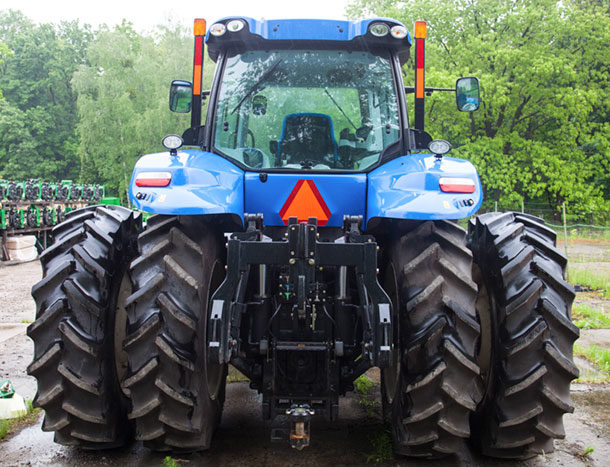If you have been shopping for machinery lately, you may have noticed that a readily available piece of equipment is getting harder and harder to find. You may have noticed the same issue when it comes to farm tractor tires as well.
If getting your old iron some new shoes is on your list of “must dos” in the coming months, it will likely pay to plan ahead and investigate what is available and which tire will suit your needs best.
First of all, if you ask a friend’s opinion on which brand or tire is best, you will likely find about as much brand loyalty for tires as for tractors themselves. You may also find, especially if you haven’t purchased tires in the past several years, that your old go-to tires are not offered anymore.
So where do we begin to select the best tire for our tractor? A good place to start, like many decisions on or off the farm, is with an honest assessment of what terrain and conditions our tractor will be operating under. As we know, different types of tractor tires perform well under different conditions. So you need to carefully consider what types of terrains your tractor will encounter. Another consideration might be how long you plan to own the tractor needing new shoes. You might be tempted to opt for a less-expensive tire if you plan on trading or selling the tractor before the tire’s useful life is expired.
I will say this to basing a tire decision on the expected ownership interval remaining: My dad used to say the best way to double your tractor’s value at auction is with new tires and a new seat. And it’s true. If I see a tractor squatting on worn-out tires with the guts of the cab ripped out, I am definitely not interested in paying top dollar for that particular tractor. If there is evidence of a lack of maintenance on the exterior, it is likely that the internals have been neglected as well.
Like many items nowadays, understanding the nomenclature of tires requires some research. I found an excellent review of tire types online, condensed by Mr. Ian Haynes. His explanations of farm tire types are as follows:
R-1 tires are your usual farm tractor tires – the most common type used in agriculture. Excellent for everyday farm chores, they perform efficiently in muddy fields and dirt. The only downside is that they are not as capable on roads or hard surfaces, especially not on snow. Another thing to consider is that they are not fit to be used on turf, as they will destroy your perfect, grassy lawn.
- R-1W tires are a more aggressive variant of the original R1; the W (wet) in the name signifies their ability to perform tasks on deep mud or clay. This ability comes from a 25% deeper cleat compared to the usual tire. This tire is a perfect fit if you spend a lot of time working in muddy or greasy clay areas, but it’s not for every farm or ranch.
- R-1HA tires are used especially for row cropping as their tall, slim design makes it easier to fit between rows of plants. The R-1HA (high angle) name refers to its higher tread angle of 45º, instead of the traditional 23º in R-1. Overall, this is a specialized tire and has limited to no use on regular farms.
- R-2s are yet another variant of the R-1, but with more tread depth, which makes them unusable for almost 99% of farmers. As such, they only shine in paddy fields, and that’s about it.
- R-3 tires are basically lawn mower tires. They are made to offer traction on grass while being as turf friendly as possible.
- F-1 tires are recognized as the ribbed tires that two-wheel drive models have on their fronts. Their design promotes steering, not propulsion.
- F-2s have a sharper center rib than F-1s. They offer better control on hard surfaces.
There are even more choices out there, such as high floatation, forestry tires and tires designed specifically for front-wheel assist (FWA) applications. So if you really didn’t see a perfect choice above, have faith that your tire need is out there.
In all tractor tires, there are two modes of construction – bias or radial. The former is cheaper and chosen by many for their utility and overall value. Radials, on the other hand, offer more durability and improved overall performance. Radials are an excellent choice if you have a higher horsepower tractor that needs to maximize its work via improved traction.
Finally, it is a good idea to put some thought into the maintenance of your tires post purchase. Details of this nature will be found in tire manuals, which can be found at the dealership or online. Knowing proper inflation is critical to optimizing not only tire performance but longevity as well. You also need to check the load carrying capacity of your tractor’s new shoes. Overloading tires is not only hard on the tires, rims and machine, it is downright dangerous as well.
Ultimately, your budget will determine the tires you place on your tractor. Tires need to be seen as an investment, so many factors need to be kept in perspective.
I think we have demonstrated that tires come in all shapes, sizes, functions and price ranges, so selecting the correct tire is a daunting task. That said, making a poor choice based solely on price is a disaster waiting to happen.



.jpg?t=1658551847&width=640)



